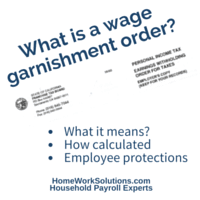FREE Updates & Tools
Sign up with HomeWork Solutions today for valuable resources only available to our subscribers.
- Receive industry related news and updates though our blog.
- Access our FREE payroll tax calculators.
- Access special offers & downloads.
I understand that I am registering for access to HWS. I grant HWS permission to contact me via email regarding household payroll and tax services they offer.
All fields are required.



